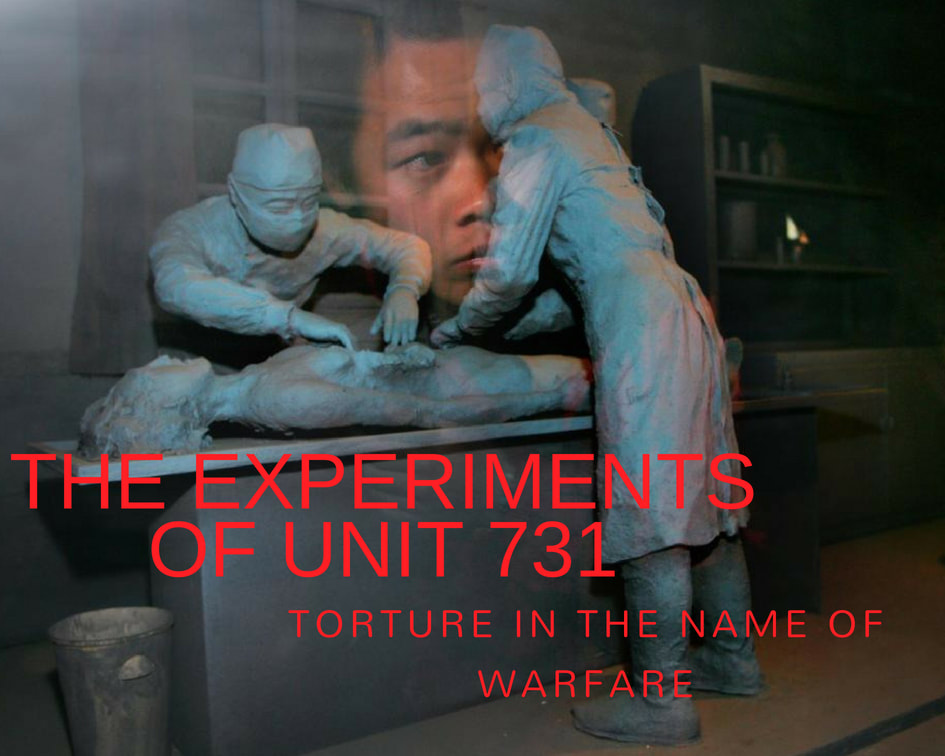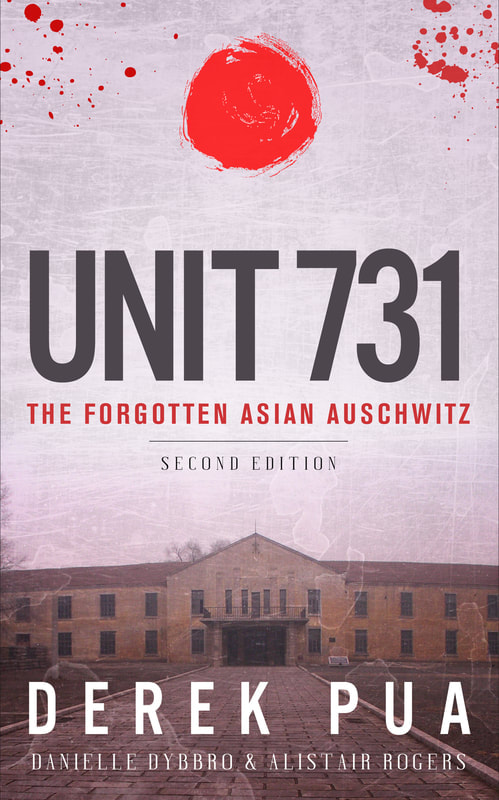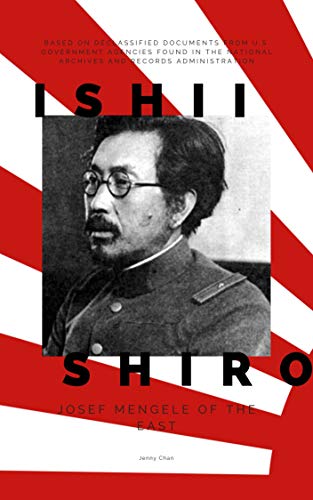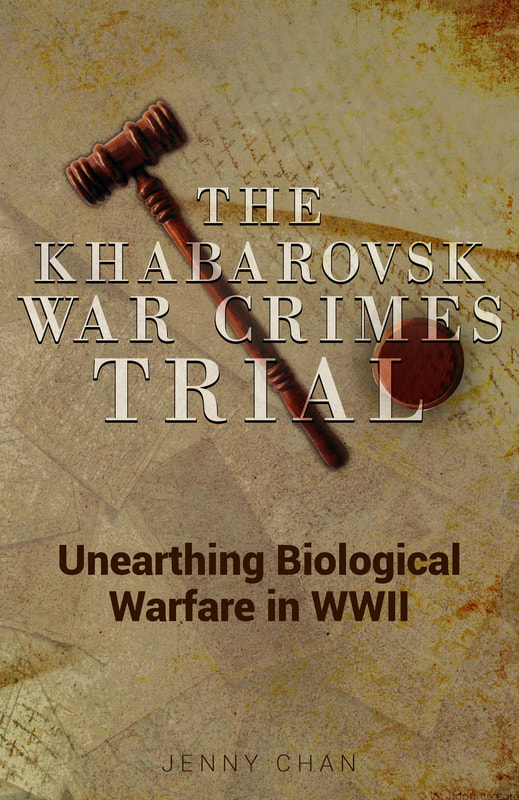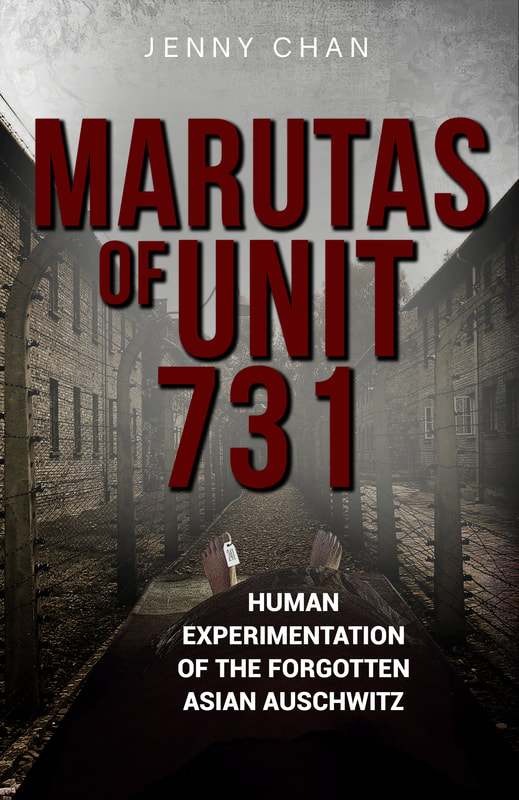|
by Sophie Hammond Unit 731 was the administrative center of the top secret biological warfare project of the Imperial Japanese Army. Located in rural Manchuria, at that time a puppet state of Japan, and known by the codename “the Epidemic Prevention and Water Purification Department”, Unit 731’s purpose was, in fact, to cause epidemics and contaminated water—for the enemy. The Imperial Japanese Army was fighting multiple wars and needed to win all of them. To do so, they turned to biological warfare. The Geneva Protocol of 1925 banned biological and chemical warfare in international armed conflicts in order to prevent the outbreak of another war on the magnitude of World War I. The Japanese delegation in attendance at the conference had signed the agreement, but since the Japanese Diet did not ratify the agreement, Japan was not bound by the Geneva Protocol. Several countries who had ostensibly agreed to the Protocol were developing their own weapons in secret, and Japan was no exception. The human test subjects of Unit 731 were criminals, political prisoners, Communists, or civilians—usually pregnant women, children, and the elderly—who were considered useful for experiments and were rounded up under trumped-up charges. Seventy percent of these victims were Chinese, while others were Korean, Mongolian, and Russian, and a few might have been Allied prisoners of war. They were called marutas by the researchers, or “logs”, because the local Manchurians were told that the facility was a lumber mill. Research findings discovered at Unit 731 were occasionally published in peer-reviewed scientific journals, where the articles claimed the experiments had been performed on Manchurian monkeys. Whether these prisoners were called logs or monkeys, their human suffering was immense. One of the most common experiments at Unit 731 was the vivisection of diseased bodies. Researchers found the most virulent strains of disease by infecting prisoners, usually by injecting them with “vaccines” or feeding them contaminated food, and killing those prisoners who recovered quickly from their illnesses. They then injected the more potent bacteria and viruses from the sickest prisoners into the next “generation” of victims. For researchers who wanted to view a more natural progression of disease, some prisoners were kept locked in cages in the same room as plague-infested mice and fleas to see how long it took for them to become infected. The prisoners were then sliced open so that researchers could see how the disease affected living organs. This vivisection was done without anesthetic, to ensure results untainted by any external factors. Vivisections were also commonly performed on pregnant women—many of whom were pregnant by rape. The researchers were especially interested in the pregnancies of women with syphilis. The Japanese military was struggling to combat the syphilis sweeping through its ranks, likely due to the rape of civilian women and of the comfort women forced to service the military. At first the researchers tried to inject prisoners with syphilis, but seeing that this yielded few results, they turned to raping them. Two prisoners, one infected with syphilis, were placed in a room together along with armed guards and made to have sex with each other. Once the previously healthy partner contracted syphilis, they would be inspected periodically to see the progression of the disease, culminating in a vivisection to see what syphilis did to the organs and—in the case of pregnant prisoners—the baby. Vivisection was practiced on Chinese citizens at many other government-sponsored research facilities besides Unit 731. For a time, it was considered the most effective way to train young Japanese medical students to perform surgeries correctly. Unit 731 researchers also experimented with methods of treating frostbite. Prisoners were taken outside in freezing weather, sometimes after being dipped in water, and kept there until their limbs were frozen solid. Artificial cool air currents accelerated the freezing. A Japanese officer who watched one of these experiments stated later that frostbite was considered achieved if, when struck, the prisoner’s limbs made a sound like a wooden board. Sometimes prisoners were left to thaw, their arms and legs turning gangrenous until they rotted. Usually, however, frostbite victims were immersed in water at various temperatures to see which temperatures cured frostbite the fastest. It’s from these tests run by Unit 731 that the world knows the most effective way to deal with frostbite—not to rub the affected limbs, but to immerse them in water between 100 and 122 degrees Fahrenheit. But the main research aim of Unit 731 was to develop the most effective biological warfare weapons. At a testing ground called Anda, prisoners were lashed to stakes and suffocated with poison gas or forced to wait while planes dropped plague bombs—bombs full of plague-infested fleas—over them. Prisoners were also used to test the effective range of flamethrowers, chemical weapons, and bombs, including bacteriological bombs. The resulting shrapnel of these weapons was often infected with various diseases, so that researchers could discover how long it would take people to die from being hit by flying shrapnel only. Unit 731 helped develop balloon bombs, which were sent to float across the Pacific to the United States and cause destruction and terror. Only a few ever actually arrived in the United States and went off, and while American news outlets were requested not to report on these bombs for fear of causing mass hysteria, there were at least seven verified American victims. Unit 731 was also instrumental in planning an army operation which was never carried out, Cherry Blossoms at Night, which involved infecting San Diego with the bubonic plague using kamikaze pilots. This operation was halted in large part, it seems, by the intervention of Hideki Tojo—a man the United States later hanged for his other war crimes. Other contributing factors to the failure of Cherry Blossoms at Night were the Japanese surrender in August 1945 (Cherry Blossoms at Night was planned for September) and the necessity near the end of the war for the Japanese to focus on defense rather than offense. China wasn’t so lucky. Using knowledge developed from Unit 731 tests, the Imperial Japanese Army created plague bombs and had airplanes spray diseases like bubonic plague, cholera, and anthrax over Chinese cities, killing hundreds of thousands of people. Plague outbreaks, for example, were reported in Changde in north-central China and Ningbo in eastern China. Between three and four hundred thousand Chinese people are estimated to have been killed by this method of biological warfare. Unit 731’s other experiments included injecting prisoners with animal blood and horse urine, heating them until they died, spinning them with centrifuges until they died, and locking them in pressure chambers until their eyes popped out. It’s estimated that about 3,000 people died from the tortures they underwent at Unit 731. After the war, the American government helped cover up many of the atrocities the Japanese military committed during the war. The masterminds of Unit 731 were granted immunity during the Tokyo Trials in exchange for handing over what data existed on the Unit 731 experiments. Many of those affiliated with Unit 731 enjoyed long and illustrious medical careers. Three Unit 731 researchers became the president of the Japan Medical Association, the head of the Japan Olympic Committee, and the Governor of Tokyo. In April 2018, a nearly complete list of the 3,607 people who were employed by Unit 731 on January 1, 1945 was released to the public. Katsuo Nishiyama, professor emeritus of Shiga University of Medical Science, is attempting to use the list to declare the university degree of one of Unit 731’s officers illegitimate. It seems likely the experiments which this man oversaw for his dissertation were performed on Unit 731 prisoners, rather than on animals as he had claimed. Many hope that the release of this list will be a major step towards Japan openly condemning its wartime atrocities. For more information about Unit 731, please check out some of the sources used to write this article. Additionally, Pacific Atrocities Education has produced a book about Unit 731. You can view it here: http://www.pacificatrocities.org/unit-731-ebook.html References
Related Books
10 Comments
Gerald Goldberg
1/26/2020 10:24:13 am
LUST LASTS BUT A MOMENT, LOVE LASTS FOREVER!
Reply
STANLEY
12/25/2020 09:58:18 am
i WATCHED A DOCUMENTARY ON tV
Reply
aaima
9/13/2023 04:40:22 pm
WHICH ONE???
Reply
david
3/5/2021 10:46:46 pm
The morally deficient leadership in the US who condoned the pardon of these butchers should be roundly condemned. MacArthur, Truman and the Joint Chiefs should be ashamed of themselves. But in brainwashed America who is going to bring this out? Our national debate focuses on the trivial and superficial. These issues will forever be silenced in the interests of National Security....
Reply
RunningWolf1989
8/11/2021 08:22:55 am
In humanity those who do such atrocities “may” get away with them, but not on God’s Judgment Day.
Reply
fiona
10/19/2021 04:58:54 am
interested in how people can do what they do to each other
Reply
Abby
7/17/2022 08:36:49 pm
Some human beings have a completely horrific way of treating others. The fact that they are unable to have compassion for others is a massive problem.
Reply
Lost hope already
9/22/2022 03:14:50 pm
Your last words, "Makes me wonder..".. Wonder YES, want to know NO, because the truth about many (all?) things is not what we thought or hope it is. Look at the world last 3yrs changing faster then a rollercoaster and not in a positive way. It cause stress to humans, thats why many are depressed or even worst did end their lives. Same story with the vaccin everybody should take and completely safe our gouverments said. Not one generation has to deal with what we do now, violation about humanrights is not far away in foreign countries, it is here, there, everywhere because WE MUST follow the new rules and the plan to create chaos and sepperated did worked instead of us stay together strong and fight back. We, the people are like cheeps now, follow without thinking. If you buy something to eat or drink the first time, you read the ingrediants whats all inside, but when you take a needle inside your arm to put some vaccin inside your body you believe the man or female on your television. You give your live to thos who dont give a *** about you.
Reply
9/10/2023 03:47:24 pm
The Whizzinator Touch is a synthetic urine device that includes a prosthetic. The device is made up of an ultra-secure belt that goes around your waist and legs,
Reply
Leave a Reply. |
- Home
- Stories
-
Internship
- Summer 2024 Internship
- Summer 2023 Internship
- Fall 2022 Internship
- Summer 2022 Internship
- Summer 2021 Internship
- Fall 2020- Spring 2021 Internship
- Summer 2020 Internship
- Fall 2019 Internship
- Summer 2019 Internship >
- School Year 2018-2019 Internship
- Summer 2018 Internship >
- Fall 2017 Internship
- Summer 2017 Internship >
- Books
- Archives
-
Resource Page
-
Supplementary Research Guides
>
- Unit 731 - Guide >
-
Philippines' Resistance - Guide
>
- Philippines World War II Timeline
- The Japanese Invasion & Conquest of the Philippines
- Bataan Death March
- Formation of Underground Philippines Resistance
- Supplies of the Guerrilla Fighters
- The Hukbalahap
- Hunter's ROTC
- Marking's Guerrillas
- United States Army Forces in the Philippines of Northern Luzon (USAFIP-NL)
- The Aetas
- Chinese and Filipino-Chinese Nationalist Guerrilla Units
- The Female Faces of the Philippine Guerrillas
- Rising Sun Flag - Guide >
- Pinay Guerrilleras - Guide >
- Fall of Singapore - Guide >
- Three Years and Eight Months - Guide >
- Siamese Sovereignty - Guide >
- The Khabarovsk War Crimes Trial - Guide >
- Unit 731 Cover-up : The Operation Paperclip of the East - Guide >
- Marutas of Unit 731 - Guide >
- Prince Konoe Memoir - Guide >
- Competing Empires in Burma - Guide >
- Battle of Shanghai - Guide >
- Ishi Shiro - Guide >
- Taiwan The Israel of the East - Guide >
- Seeking Justice for Biological Warfare Victims of Unit 731 - Guide >
- Rice and Revolution - Guide >
- Clash of Empires - Guide >
-
Hunger for Power and Self-SufficiencyI - Guide
>
- The Influence of War Rations on Post-War Culinary Transformations
- How World War II Complicated Food Scarcity and Invention
- American Military Innovations
- Government-Sponsored Food Inventions in Europe during World War II
- Feeding the Army: The Adaptation of Japanese Military Cuisine and Its Impact on the Philippines
- Mixed Dishes: Culinary Innovations Driven by Necessity and Food Scarcity
-
Denial A Quick Look of History of Comfort Women and Present Days’ Complication - Guide
>
- The Comfort Women System and the Fight for Recognition
- The Role of Activism and International Pressure
- The Controversy over Japanese History Textbooks
- The Sonyŏsang Statue and the Symbolism of Public Memorials
- Activism and Support from Japanese Citizens
- The Future of Comfort Women Memorials and Education
- Echoes of Empire: The Power of Japanese Propaganda - Guide >
- Lesson Plans >
-
Supplementary Research Guides
>
|
Pacific Atrocities Education
730 Commercial Street San Francisco, CA 94108 415-988-9889 |
Copyright © 2021 Pacific Atrocities Education.
We are a registered 501 (c)(3) charity. |
- Home
- Stories
-
Internship
- Summer 2024 Internship
- Summer 2023 Internship
- Fall 2022 Internship
- Summer 2022 Internship
- Summer 2021 Internship
- Fall 2020- Spring 2021 Internship
- Summer 2020 Internship
- Fall 2019 Internship
- Summer 2019 Internship >
- School Year 2018-2019 Internship
- Summer 2018 Internship >
- Fall 2017 Internship
- Summer 2017 Internship >
- Books
- Archives
-
Resource Page
-
Supplementary Research Guides
>
- Unit 731 - Guide >
-
Philippines' Resistance - Guide
>
- Philippines World War II Timeline
- The Japanese Invasion & Conquest of the Philippines
- Bataan Death March
- Formation of Underground Philippines Resistance
- Supplies of the Guerrilla Fighters
- The Hukbalahap
- Hunter's ROTC
- Marking's Guerrillas
- United States Army Forces in the Philippines of Northern Luzon (USAFIP-NL)
- The Aetas
- Chinese and Filipino-Chinese Nationalist Guerrilla Units
- The Female Faces of the Philippine Guerrillas
- Rising Sun Flag - Guide >
- Pinay Guerrilleras - Guide >
- Fall of Singapore - Guide >
- Three Years and Eight Months - Guide >
- Siamese Sovereignty - Guide >
- The Khabarovsk War Crimes Trial - Guide >
- Unit 731 Cover-up : The Operation Paperclip of the East - Guide >
- Marutas of Unit 731 - Guide >
- Prince Konoe Memoir - Guide >
- Competing Empires in Burma - Guide >
- Battle of Shanghai - Guide >
- Ishi Shiro - Guide >
- Taiwan The Israel of the East - Guide >
- Seeking Justice for Biological Warfare Victims of Unit 731 - Guide >
- Rice and Revolution - Guide >
- Clash of Empires - Guide >
-
Hunger for Power and Self-SufficiencyI - Guide
>
- The Influence of War Rations on Post-War Culinary Transformations
- How World War II Complicated Food Scarcity and Invention
- American Military Innovations
- Government-Sponsored Food Inventions in Europe during World War II
- Feeding the Army: The Adaptation of Japanese Military Cuisine and Its Impact on the Philippines
- Mixed Dishes: Culinary Innovations Driven by Necessity and Food Scarcity
-
Denial A Quick Look of History of Comfort Women and Present Days’ Complication - Guide
>
- The Comfort Women System and the Fight for Recognition
- The Role of Activism and International Pressure
- The Controversy over Japanese History Textbooks
- The Sonyŏsang Statue and the Symbolism of Public Memorials
- Activism and Support from Japanese Citizens
- The Future of Comfort Women Memorials and Education
- Echoes of Empire: The Power of Japanese Propaganda - Guide >
- Lesson Plans >
-
Supplementary Research Guides
>
